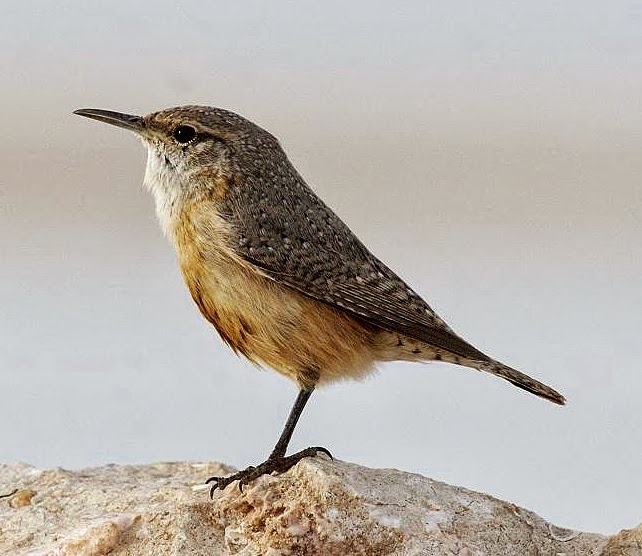Rock wren

 |
| Photo by Erik Breden (Internet Bird Collection) |
Common name:
rock wren (en); carriça-das-rochas (pt); troglodyte des rochers (fr); chivirín saltarroca (es); felsenzaunkönig (de)
Taxonomy:
Order Passeriformes
Family Troglodytidae
Range:
This species is found from south-western Canada, through the western United States and Mexico and into Guatemala, Honduras, El Salvador and Costa Rica. The more northern populations migrate south to winter along the southern parts of the range.
Size:
These birds are 12-15 cm long and have a wingspan of 23 cm. They weigh 15-18 g.
Habitat:
The rock wren is mostly found in scrublands and rocky areas, especially in mountainous areas, but occur from sea level up to an altitude of 3.500 m.
Diet:
They feed on various insects and spiders.
Breeding:
Rock wrens are monogamous and nest in a loose cup made of grass, bits of wood, bark, moss, hair, and occasionally fresh plant material in shallow space; lined with rootlets, hair, wool, spider silk. It is placed in a cavity or crevice amongst rocks, usually with a foundation of stone and often with pavement of small stones extending from nest to entrance of nest cavity and sometimes beyond. The female lays 3-10 white eggs with fine reddish brown spots, which she incubates alone for 14-16 days. The chicks are fed by both parents and fledge 14-16 days after hatching. They continue to receive food from parents for another week.
Conservation:
IUCN status – LC (Least Concern)
This species has a very large breeding range and is described as widespread and common. The population has undergone a small decrease over the last 4 decades, but ir is not considered threatened.
































